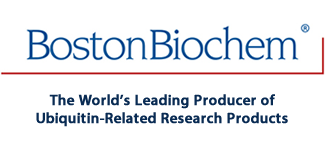
Recombinant Human HA-GATE-16 Vinyl Sulfone Protein, CF Summary
Product Datasheets
Carrier Free
CF stands for Carrier Free (CF). We typically add Bovine Serum Albumin (BSA) as a carrier protein to our recombinant proteins.Adding a carrier protein enhances protein stability, increases shelf-life, and allows the recombinant protein to be stored at a more dilute concentration.The carrier free version does not contain BSA.
In general, we advise purchasing the recombinant protein with BSA for use in cell or tissue culture, or as an ELISA standard.In contrast, the carrier free protein is recommended for applications, in which the presence of BSA could interfere.
UL-446
| Shipping | The product is shipped with dry ice or equivalent. Upon receipt, store it immediately at the temperature recommended below. |
| Stability & Storage: | Store the unopened product at -70 °C. Use a manual defrost freezer and avoid repeated freeze-thaw cycles. Do not use past expiration date. |
Reconstitution Calculator
Background: GATE-16
Golgi-associated ATPase Enhancer of 16 kDa (GATE-16), also known as Apg8p2 and GABARAPL2, is a 117 amino acid (aa) polypeptide and a member of the Autophagy-related 8 (Atg8) family of proteins (1). GATE-16/Apg8p2 has 100% aa sequence identity with its mouse and rat orthologs, and is orthologous to the yeast Atg8. Atg8 family members show structural similarity with Ubiquitin, but lack aa sequence similarity. GATE-16/Apg8p2 is best known for its role in autophagy (2,3). GATE-16/Apg8p2 covalently attaches to phosphatidylethanolamine (PE) the phagophore (autophagosome precursor) membrane using a Ubiquitin-like conjugation system that includes Ubiquitin-activating (E1)-, Ubiquitin-conjugating (E2)-, and Ubiquitin Ligase (E3)-like enzymes. Here it is involved in the later stages of autophagosome formation (4,5). It may also be involved in cargo recruitment to autophagosomes (1).
This N-terminal HA-tagged Apg8 protein is a potent, irreversible and specific inhibitor of Agp8-specific isopeptidases (such as Apg84B, Catalog #E-400). Apg84B activities include the processing of Apg8 precursor proteins and the removal of Apg8 proteins that are conjugated to phosphatidylethanolamine during autophagy. These processes can be inhibited by this vinyl sulfone derivative which reacts with the Apg84B active site cysteine. The HA peptide sequence (YPYDVPDYA) is derived from the influenza hemagglutin in protein. This epitope allows for the sensitive identification or purification of such deconjugating activities since it is specifically recognized by anti-HA antibodies and/or anti-HA-agarose.
FAQs
No product specific FAQs exist for this product, however you may
View all Proteins and Enzyme FAQsPrimary Antibodies
HA Tag Antibody
Recombinant Enzymes
Recombinant Human His6-ATG3 Protein, CF
Recombinant Human His6-ATG7 Isoform 1 Protein, CF
Recombinant Proteins
Recombinant Human Pro-GABARAPL1 Protein, CF
Recombinant Human His6-GABARAP Biotin Protein, CF
Reviews for Recombinant Human HA-GATE-16 Vinyl Sulfone Protein, CF
There are currently no reviews for this product. Be the first toreview Recombinant Human HA-GATE-16 Vinyl Sulfone Protein, CF and earn rewards!
Have you used Recombinant Human HA-GATE-16 Vinyl Sulfone Protein, CF?
Submit a review and receive an Amazon gift card.
$25/€18/£15/$25CAN/¥75 Yuan/¥1250 Yen for a review with an image
$10/€7/£6/$10 CAD/¥70 Yuan/¥1110 Yen for a review without an image
ebiomall.com






>
>
>
>
>
>
>
>
>
>
>
>
是将具有高灵敏度的化学发光测定技术与高特异性的免疫反应相结合,用于各种抗原、半抗原、抗体、激素、酶、脂肪酸、维生素和药物等的检测分析技术。是继放免分析、酶免分析、荧光免疫分析和时间分辨荧光免疫分析之后发展起来的一项最新免疫测定技术。
MPI是一种基于消息传递的并行编程技术,在不同节点计算机之间并行多进程执行程序(这种情况下,不同享内存),只是通过消息传递来进行通信,从而适用于分布式体系
2005年第145号
为进一步贯彻实施《中华人民共和国计量法》、《中华人民共和国行政许可法》,我局组织制定了“中华人民共和国依法管理的计量器具目录(型式批准部分)”,现予以公布,自2006年5月1日起施行。列入“中华人民共和国依法管理的计量器具目录(型式批准部分)”的项目要办理计量器具许可证、型式批准和进口计量器具检定。
实施强制检定的工作计量器具目录按现有规定执行。专用计量器具目录由国务院有关部门计量机构拟定,报我局审核后另行公布。医用超声源、医用激光源、医用辐射源的管理按“关于明确医用超声、激光和辐射源监督管理范围的通知”(技监局量发[1998]49号)执行。
自即日起,未列入本目录的计量器具,不再办理计量器具许可证、型式批准和进口计量器具检定。
附件:中华人民共和国依法管理的计量器具目录(型式批准部分)
二〇〇五年十月八日
附件:
中华人民共和国依法管理的计量器具目录(型式批准部分)
1. 测距仪:光电测距仪、超声波测距仪、手持式激光测距仪;
2. 经纬仪:光学经纬仪、电子经纬仪;
3. 全站仪:全站型电子速测仪;
4. 水准仪:水准仪;
5. 测地型GPS接收机:测地型GPS接收机;
6. 液位计:液位计;
7. 测厚仪:超声波测厚仪、X射线测厚仪、电涡流式测厚仪、磁阻法测厚仪、γ射线厚度计;
8. 体温计:测量人体温度的红外温度计(红外耳温计、红外人体表面温度快速筛检仪);
9. 辐射温度计:工作用全辐射感温器、工作用辐射温度计、500℃以下工作用辐射温度计;
10. 天平:非自动天平;
11. 非自动衡器:非自动秤、非自行指示轨道衡、数字指示轨道衡;
12. 自动衡器:重力式自动装料衡器、连续累计自动衡器(皮带秤)、非连续累计自动衡器、动态汽车衡(车辆总重计量)、动态称量轨道衡、核子皮带秤;
13. 称重传感器:称重传感器;
14. 称重显示器:数字称重显示器;
15. 加油机:燃油加油机;
16. 加气机:液化石油气加气机、压缩天然气加气机;
17. 流量计:差压式流量计、速度式流量计、液体容积式流量计、转子流量计、靶式流量变送器、临界流流量计、质量流量计、气体层流流量传感器、气体腰轮流量计、明渠堰槽流量计;
18. 水表:冷水表、热水表;
19. 燃气表:膜式煤气表;
20. 热能表:热能表;
21. 风速表:轻便三杯风向风速表、轻便磁感风向风速表、电接风向风速仪;
22. 血压计和血压表:血压计、血压表;
23. 眼压计:压陷式眼压计;
24. 压力仪表:弹簧管式精密压力表和真空表、弹簧管式一般压力表、压力真空表和真空表、膜盒压力表、记录式压力表、压力真空表及真空表、轮胎压力表、压力控制器、数字压力计;
25. 压力变送器和压力传感器:压力变送器、压力传感器;
26. 氧气吸入器:浮标式氧气吸入器;
27. 材料试验机:摆锤式冲击试验机、悬臂梁式冲击试验机、轴向加荷疲劳试验机、旋转纯弯曲疲劳试验机、拉力、压力和万能试验机、非金属拉力、压力和万能试验机、电子式万能材料试验机、木材万能试验机、抗折试验机、杯突试验机、扭转试验机、高温蠕变、持久强度试验机;
28. 振动冲击测量仪:工作测振仪、公害噪声振动计、冲击测量仪、基桩动态测量仪;
29. 测速仪:机动车雷达测速仪、定角式雷达测速仪;
30. 出租汽车计价器:出租汽车计价器;
31. 接地电阻测量仪器:接地电阻表、接地导通电阻测试仪;
32. 绝缘电阻测量仪:绝缘电阻表(兆欧表)、高绝缘电阻测量仪(高阻计);
33. 泄漏电流测量仪:泄漏电流测量仪(表);
34. 耐电压测试仪:耐电压测试仪;
35. 电能表:交流电能表、电子式电能表、分时计度(多费率)电能表、最大需量电能表、直流电能表;
36. 测量互感器:测量用电流互感器、测量用电压互感器;
37. 电阻应变仪:电阻应变仪;
38. 场强测量仪:干扰场强测量仪、近区电场测量仪;
39. 微波辐射与泄漏测量仪:微波辐射与泄漏测量仪;
40. 心脑电测量仪器:心电图机、脑电图机、脑电地形图仪、心电监护仪;
41. 电话计时计费器:单机型和集中管理分散计费型电话计时计费器、IC卡公用电话计时计费装置;
42. 噪声测量分析仪器:声级计、噪声剂量计、噪声统计分析仪、个人声暴露计、倍频程和1/3倍频程滤波器;
43. 听力计:纯音听力计、阻抗听力计;
44. 医用超声源:超声多普勒胎儿监护仪超声源、医用超声诊断仪超声源、医用超声治疗机超声源、超声多普勒胎心仪超声源;
45. 焦度计:焦度计;
46. 验光机:验光机;
47. 照度计:紫外辐射照度计、光照度计;
48. 医用激光源:医用激光源;
49. 活度计:放射性活度计、用152Eu点状γ标准源校准锗γ谱仪、低本底α、β测量仪、α、β和γ表面污染仪、γ放射免疫计数器;
50. 环境与防护剂量(率)计:环境监测用X、γ辐射热释光剂量测量装置、环境监测用X、γ辐射空气吸收剂量率仪、辐射防护用X、γ辐射剂量当量(率)仪和监测仪、直读式验电器型个人剂量计、个人监测用X、γ辐射热释光剂量测量装置、X、γ辐射个人报警仪、中子周围剂量当量测量仪;
51. 剂量计:治疗水平电离室剂量计、γ射线水吸收剂量标准剂量计(辐射加工级)、γ射线辐射加工工作剂量计、电子束辐射加工工作剂量计;
52. 医用辐射源:外照射治疗辐射源、医用诊断X辐射源、医用诊断计算机断层摄影装置(CT)X射线辐射源、γ射线辐射源(辐射加工用);
53. 测氡仪:测氡仪;
54. 热量计:氧弹热量计、水流型气体热量计、示差扫描热量计;
55. 糖量计:手持糖量计、手持折射仪;
56. 电导仪:电导仪;
57. pH计:实验室pH(酸度)计、船用pH计;
58. 分光光度计:可见分光光度计、单光束紫外-可见分光光度计、原子吸收分光光度计、双光束紫外可见分光光度计、荧光分光光度计、色散型红外分光光度计、紫外、可见、近红外分光光度计、全差示分光光度计;
59. 光谱仪:发射光谱仪、波长色散X射线荧光光谱仪;
60. 旋光仪:旋光仪、旋光糖量计;
61. 色谱仪:气相色谱仪、液相色谱仪、离子色谱仪、凝胶色谱仪;
62. 浊度计:浊度计;
63. 烟尘粉尘测量仪:烟尘测试仪、粉尘采样器、光散射式数字粉尘测试仪;
64. 总悬浮颗粒物采样器:总悬浮颗粒物采样器;
65. 大气采样器:大气采样器;
66. 水质分析仪:覆膜电极溶解氧测定仪、水中油份浓度分析仪、化学需氧量(COD)测定仪、氨自动分析仪、生物化学需氧量(BOD5)测量仪、硝酸根自动监测仪、总有机碳分析仪、离子计;
67. 有毒有害气体检测(报警)仪:二氧化硫气体检测仪、硫化氢气体分析仪、一氧化碳检测报警器、一氧化碳、二氧化碳红外线气体分析器、烟气分析仪、化学发光法氮氧化物分析仪;
68. 易燃易爆气体检测(报警)仪:可燃气体检测报警器、光干涉式甲烷测定器、催化燃烧式甲烷测定器、催化燃烧型氢气检测仪;
69. 汽车排放气体测试仪:汽车排放气体测试仪;
70. 烟度计:滤纸式烟度计、透射式烟度计;
71. 测汞仪:测汞仪;
72. 水分测定仪:烘干法谷物水分测定仪、电容法和电阻法谷物水分测定仪、原棉水分测定仪;
73. 呼出气体酒精含量探测器:呼出气体酒精含量探测器;
74. 光度计:火焰光度计、非色散原子荧光光度计;
75. 血细胞分析仪:血细胞分析仪
建议查下资料哦
感觉提问主意不是很清晰
因为我公司里面臭氧管道是正方形,估计是50cm*50cm哪么大,都不知道怎么取样。求各位高手指点一下。我的QQ是393593653.希望大家帮帮我。
谢谢。
化学发光则不需要电化学的那套系统。在反应器中会同时打入一些反应物,当物质与反应物作用,因化学上的自身氧化还原反应,致使发光。而同时被测到光的量,也是再被转换成浓度讯号。
核酸是一类生物大分子,在蛋白质的合成和遗传中起着重要作用.核酸传感器,特别是DNA传感器的研制引起广泛关注.DNA传感器一股以固定化的单链DNA为分子识别物质.对目标DNA片段(靶序列)进行识别,通过一定的检测手段进行









